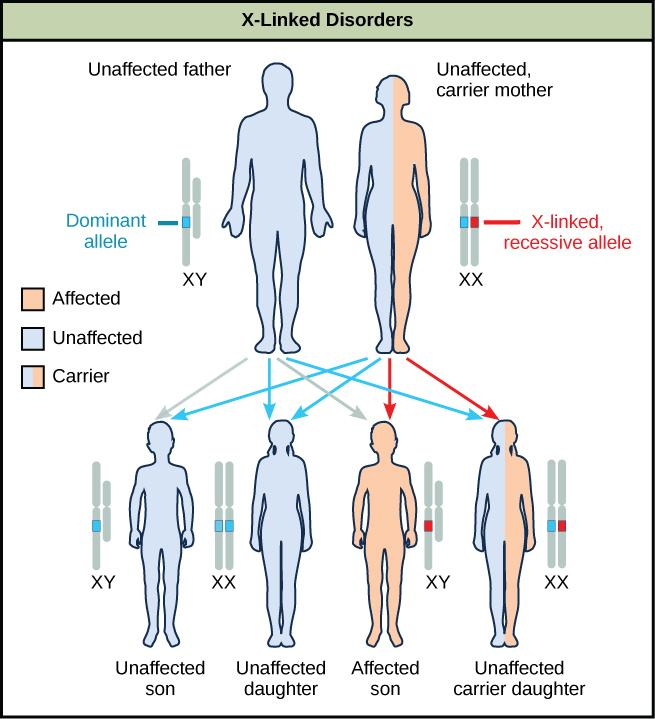Answer
405.3k+ views
Hint: The color blindness is the eye defect in which the person cannot see different colors. These people struggle for a vision in the bright environment. It is the inherited disorder that might pass from one generation to the other. In color blindness, there will be damage in the cone cells of the retina that provide vision during day time.
Complete Answer:
Let x is considered as the recessive gene carrying the color blindness character in it. X and Y are the dominant gene of the female and the male that do not carry the genes of the color blindness. It is known that the chromosome of the male is resembled by XY and that of female is considered as the XX. In the ${F_1}$ generation, the carrier woman and the color blindness man is crossed to produce the offspring. Hence the heterozygous female is represented as Xx and the color blind ness man is represented as the xY.

The obtained result in the ${F_1}$ generation is one carrier female, one color blindness daughter, one color blind son and the one normal son. Hence the ratio of the ${F_1}$ generation is $1:1:1:1$.

Thus, the option (C) is correct.
Note: Take the given male and female chromosomes, inter cross it. From the obtained result it is known that the XY is the normal son without any color blindness, xY is the color blind son. The gene Xx is carrier female that carries the color blind gene to the next generation. xx is the color blind daughter obtained from the ${F_1}$ generation.
Complete Answer:
Let x is considered as the recessive gene carrying the color blindness character in it. X and Y are the dominant gene of the female and the male that do not carry the genes of the color blindness. It is known that the chromosome of the male is resembled by XY and that of female is considered as the XX. In the ${F_1}$ generation, the carrier woman and the color blindness man is crossed to produce the offspring. Hence the heterozygous female is represented as Xx and the color blind ness man is represented as the xY.

The obtained result in the ${F_1}$ generation is one carrier female, one color blindness daughter, one color blind son and the one normal son. Hence the ratio of the ${F_1}$ generation is $1:1:1:1$.

Thus, the option (C) is correct.
Note: Take the given male and female chromosomes, inter cross it. From the obtained result it is known that the XY is the normal son without any color blindness, xY is the color blind son. The gene Xx is carrier female that carries the color blind gene to the next generation. xx is the color blind daughter obtained from the ${F_1}$ generation.
Recently Updated Pages
How many sigma and pi bonds are present in HCequiv class 11 chemistry CBSE

Why Are Noble Gases NonReactive class 11 chemistry CBSE

Let X and Y be the sets of all positive divisors of class 11 maths CBSE

Let x and y be 2 real numbers which satisfy the equations class 11 maths CBSE

Let x 4log 2sqrt 9k 1 + 7 and y dfrac132log 2sqrt5 class 11 maths CBSE

Let x22ax+b20 and x22bx+a20 be two equations Then the class 11 maths CBSE

Trending doubts
Fill the blanks with the suitable prepositions 1 The class 9 english CBSE

At which age domestication of animals started A Neolithic class 11 social science CBSE

Which are the Top 10 Largest Countries of the World?

Give 10 examples for herbs , shrubs , climbers , creepers

Difference between Prokaryotic cell and Eukaryotic class 11 biology CBSE

Difference Between Plant Cell and Animal Cell

Write a letter to the principal requesting him to grant class 10 english CBSE

Change the following sentences into negative and interrogative class 10 english CBSE

Fill in the blanks A 1 lakh ten thousand B 1 million class 9 maths CBSE



